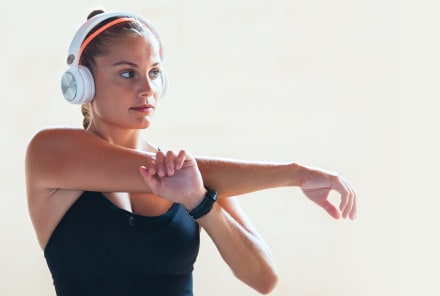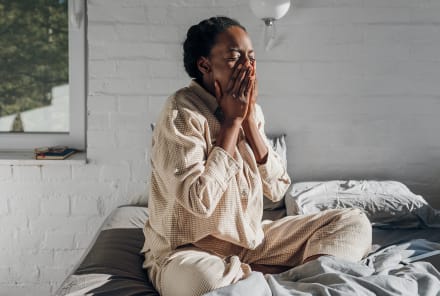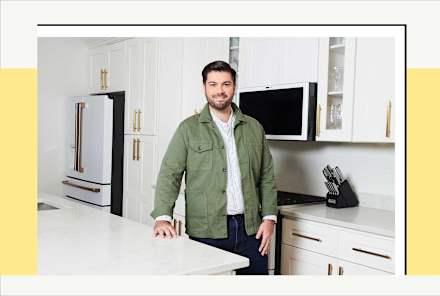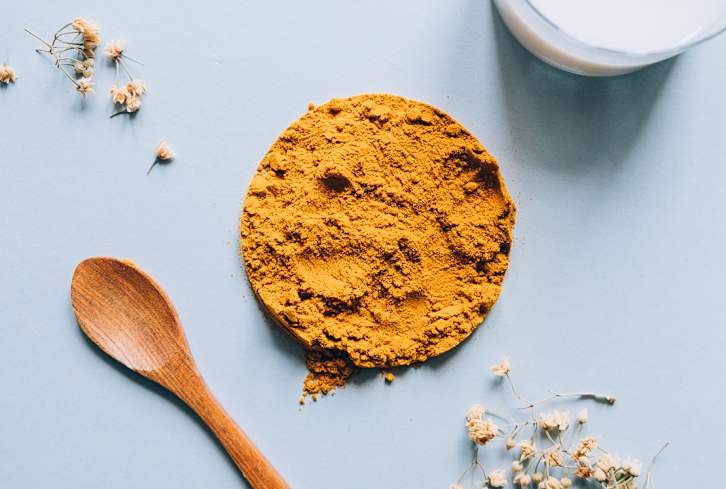Advertisement

For 28 years, a hectic life was my norm. I don't just mean an occasional busy schedule; I was constantly on the move, both physically and geographically. As a child, I attended 18 schools, learned five languages, and lived in Uganda, Kenya, Italy, and several other countries. At 15, I even moved to Germany alone to attend a professional ballet academy.
Ballet school was everything I had dreamed of and, paradoxically, the most emotionally traumatic and physically exhausting experience of my life. I danced for 12 hours a day, constantly being told I wasn’t enough, that I needed to do better, and that I would never succeed if I didn't work harder.
This relentless experience made me outwardly strong, emotionally resilient (though not by choice), and physically fit. But inside, I was struggling.
The first sign something was off
I excelled in ballet school and, upon graduation, signed with one of the best European ballet companies —a longtime dream of mine. Despite the long days and the stress on my body and mind, I felt proud to be doing what I had worked so so hard for.
During a Swan lake production, I suddenly came down with Epstein-Barr virus, better known as “mono.” My organs were swollen, and my body couldn’t take it. While most young and fit athletes recover quickly, it took me six months, during which I had to stop dancing altogether.
This was the first sign that my body and immune system were not as resilient as they should have been for a fit young athlete.
When I finally returned, I pushed ahead and expanded my repertoire to musical theater and television. Everything seemed fine until I faced a career-ending injury—a chronic tendon injury to my right ankle that, unfortunately, could not be surgically fixed.
I was mentally, physically, and emotionally defeated
After my injury healed, I spent a few years as a movement therapist teaching yoga, Pilates, and personal training before deciding to pursue a career in Physiotherapy, starting with biomedical school. Unsurprisingly to myself, I became obsessed with perfection in academics, spending countless sleepless nights studying to get to the top of my class. This was a different but equally taxing high-stress environment to which I was drawn.
During these busy years of studying, I experienced pain, severe anxiety, and intermittent fevers, which I regretfully ignored.
My doctor attributed the fevers to an invisible UTI, but we quickly figured out that wasn’t the case. Despite this, I kept pushing, thinking that perhaps I was getting sick because I wasn't moving my body as much as I used to. It's safe to say I was wrong.
Then, my symptoms got worse
While the fevers were easy to dismiss, the sudden severe pain in my hips, calf muscles, and between my shoulder blades demanded attention.
While studying to become a physiotherapist, my education focused primarily on Western medicine principles and never addressed the connection between stress and chronic disease.
After conducting my own research, I discovered an entire world of holistic medicine that wasn't covered in my coursework, which left me feeling disappointed with the conventional medicine approach.
Could stress be the cause of my fevers, pain, and weak immune system? I had pretty much always been in a state of constant stress, I realized.
I didn't think I was "sick enough"
Perhaps, I thought, but if I could still get out of bed, I must be fine. I convinced myself that my body wasn’t sick enough to be heard. In response, I got another fever, this time lasting two months. As always, I pushed ahead.
Then, the COVID-19 pandemic hit. During lockdown, much of London’s public transit was shut down, so I was walking more than before. That’s when I noticed my heart rate spasming even with low-impact movements—another sign.
One morning, during my usual yoga flow, I entered a backbend I did every day and suddenly injured my neck, throwing my back into a full spasm as well. "Fine," I said to myself, "I’ll rest—but only for two days." So, I got into bed.
I wouldn't stand from that bed on my own for well over a year.
At first, I thought it might be COVID, the flu, or something else, but all the tests came back negative, and none of the medications worked.
I was desperate. My body was in constant pain, so much so that I was losing sleep. Despite being physically exhausted, I couldn’t even clock a full night of rest.
How I got diagnosed with Chronic Fatigue Syndrome (CFS)
After spending over $20,000 on state-of-the-art medical testing, visits to the best doctors in London, and a long list of tried and failed treatments, I finally received a diagnosis: Chronic Fatigue Syndrome (CFS).
Some doctors also added Long Covid (even though my results had been negative), Postural Orthostatic Tachycardia Syndrome (POTS), and fibromyalgia to the list, all delivering the same message: This would be a lifelong battle.
To make matters worse, my doctors informed me that my case of CFS was so severe that my chance of having children was slim to none. Needless to say, I was devastated.
My unconventional path to healing
While grappling with the idea of my life being forever changed, I used what little energy I had to do my own research. I tried everything I could—visiting functional medicine doctors and massage therapists, experimenting with various diets, and more. One day, I came across what would eventually become my healer.
Diving deeper into alternative medicine, I discovered the Lightning Process by psychologist and osteopathic doctor Phil Parker, Ph.D., a healing method focused on brain retraining. Initially, it seemed impossible to be true, but the glowing reviews intrigued me.
As the natural researcher I am, I contacted one of the participants to hear her story directly. During our phone call, she shared how this process healed her through the mind-body connection and highly recommended it for my situation.
After a few more days of research, I decided to give it a try. “Why not?” I thought. I had tried everything else, so I wouldn't be surprised if it didn’t work.
Turns out, I was surprised—it worked.
After a year of being bed-bound, three days of the Lightning Process helped me stand up and walk across my home. I felt my body coming back to life.
While I still experienced occasional energy crashes, the difference was monumental. After a few months, I was not yet fully healed though, so I decided to embark on somatic therapies like Somatic Experiencing, which focuses on healing trauma stored in the body, and Polyvagal therapeutics, which focuses on harnessing your nervous system’s responses to stress.
Given the traumas in my childhood, the trauma I faced as a young and professional dancer, and my career-ending injury, there was a lot to work through.
All these processes had one thing in common: treating the whole human through the nervous system and rewiring the stress-based mind-body connection processes. I learned how to rewire my nervous system to eliminate negative self-talk, heal physical anxiety, and address years of trauma buildup stuck inside my body.
Why I'm so passionate about nervous system healing
While no single program healed me entirely, my own combination of approaches did.
Healing myself through the lens of the nervous system pulled me out of a dark place both physically and mentally and taught me that I was never broken in the first place: I was human with unresolved trauma and stress trapped in a body doing the best it could. With what I know now, it’s my mission to help others fully recover and know just how much healing is possible.
Through my book, The Secret Language of the Body, which I co-authored with my business partner Karden Rabin, and our company Somia which houses The HEAL Program, I’ve poured my heart into continuing this positive chain of healing by focusing on the nervous system.
Over the past three years, I’ve helped thousands of people fully heal from chronic fatigue, POTS, fibromyalgia, IBS, long COVID, autoimmune diseases like Lupus, and much more.
Looking back at the onset of my illness, I wish I had known how to listen to those messages coming from my body alerting me that something was off. However, I truly believe everything happens for a reason, and my invisible illness has led me to a path of helping others—a path for which I am eternally grateful.

Which Is Healthier: One Drink Daily Or A Few Drinks On The Weekend?
Molly Knudsen, M.S., RDN

Women Are 2X More Likely To Deal With This Common Issue Than Men
Gretchen Lidicker, M.S.

Which Is Healthier: One Drink Daily Or A Few Drinks On The Weekend?
Molly Knudsen, M.S., RDN

Women Are 2X More Likely To Deal With This Common Issue Than Men
Gretchen Lidicker, M.S.

Which Is Healthier: One Drink Daily Or A Few Drinks On The Weekend?
Molly Knudsen, M.S., RDN

Women Are 2X More Likely To Deal With This Common Issue Than Men
Gretchen Lidicker, M.S.

Which Is Healthier: One Drink Daily Or A Few Drinks On The Weekend?
Molly Knudsen, M.S., RDN

Women Are 2X More Likely To Deal With This Common Issue Than Men
Gretchen Lidicker, M.S.















